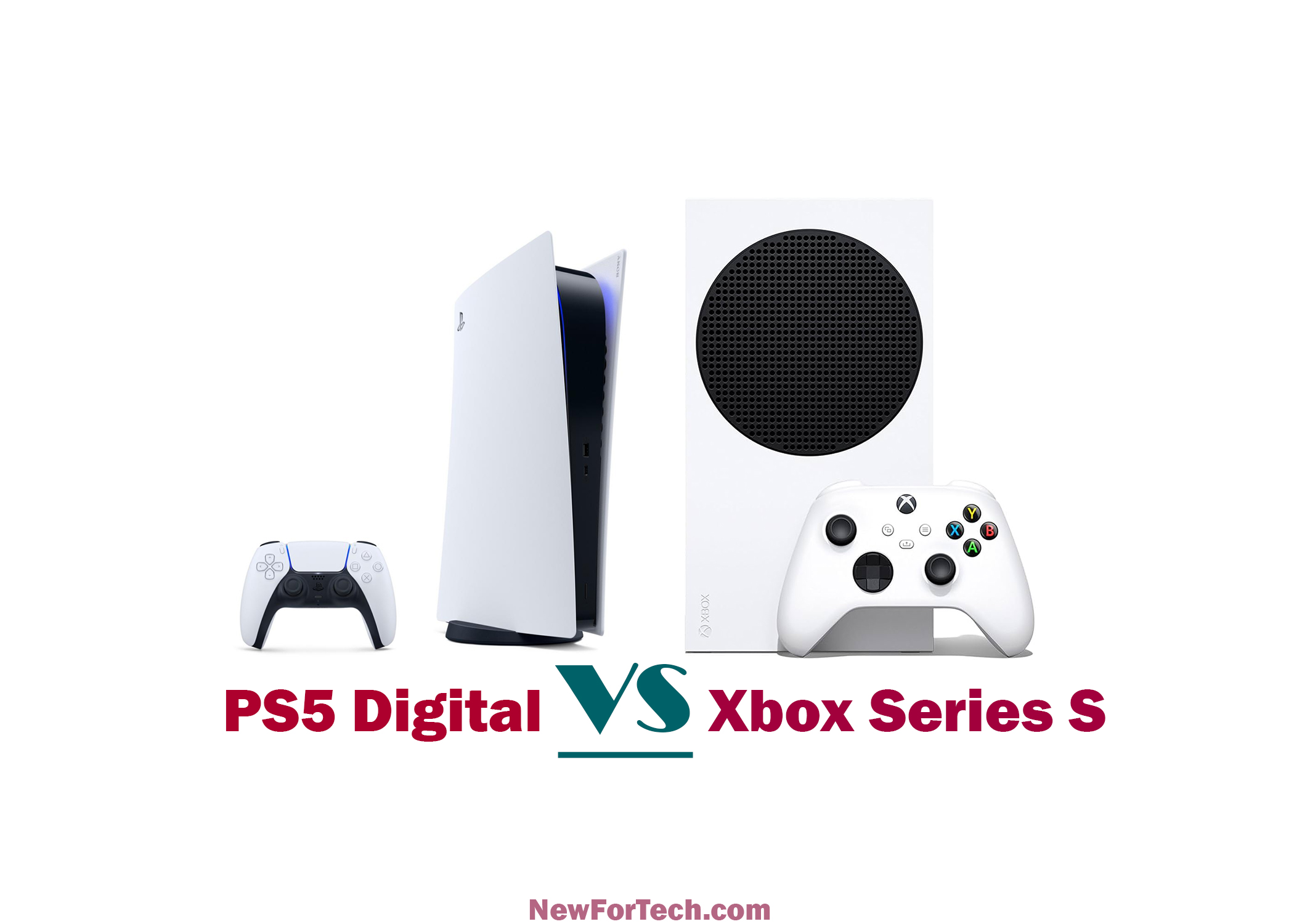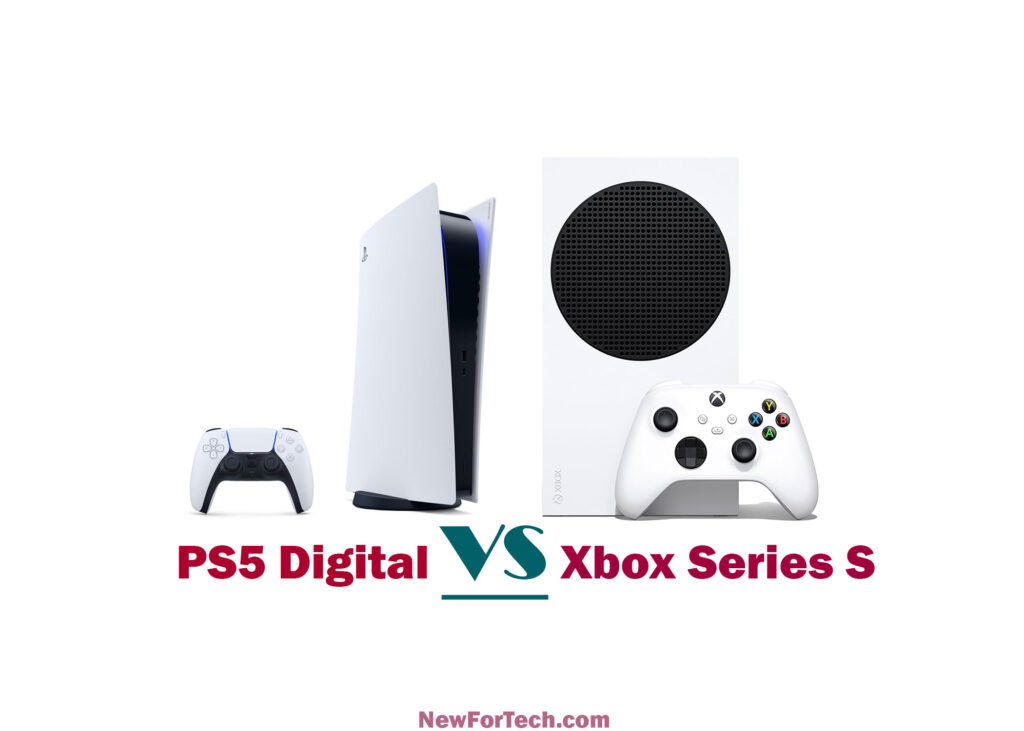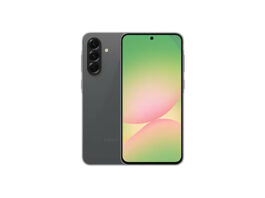Comparing the PS5 Digital Edition and Xbox Series S proves crucial for those seeking an all-digital console. Despite being cheaper without disc support, both have key differences, complicating choices for newcomers. To simplify your decision-making, we’ve compiled essential information.
Both consoles exclusively support digital content, reducing costs compared to disc-compatible versions. However, the absence of physical media support is a notable trade-off. Our breakdown of specs and capabilities aims to streamline your decision.
Performance is a pivotal factor in this debate. The PS5 Digital Edition mirrors the PS5 sans a disc drive, while the Xbox Series S is a compact variant of Microsoft’s flagship, the Xbox Series X.
It’s pertinent to mention Sony’s upcoming release, the PS5 Slim, this month. Boasting similar specs and price, it omits a disc drive by default. Sony offers a detachable disc drive separately or bundled with the unit for those who prefer physical media.
PRICE AND RELEASE DATE COMPARISON: PS5 DIGITAL EDITION VS XBOX SERIES S
Sony’s PS5 Digital Edition, sans the 4K Blu-Ray drive, is $100 cheaper than the standard PS5. Priced at $399 / £359 / $AU599.95, availability varies by region. In contrast, Microsoft’s Xbox Series S, the most affordable current-gen console at $299 / £249 / AU$499, launched alongside the Xbox Series X.
However, Sony increased the PS5 price globally due to inflation, with the Digital Edition now at £389.99 in the UK and $AU649.95 in Australia. Xbox, maintaining its prices, gains a competitive edge against the PS5. Yet, potential future price hikes from Xbox remain uncertain.
The Xbox Series S currently holds a $100 / £130 price advantage over the PS5 Digital Edition. However, it doesn’t guarantee a clear win for Microsoft, unless pricing is your primary concern.
PS5 DIGITAL EDITION VS XBOX SERIES S: SPECS
The PS5 Digital Edition mirrors the standard PS5 sans a 4K Blu-Ray drive, maintaining symmetrical aesthetics. Despite visual parity, both exhibit identical performance. Key technical specifications are outlined below:
| PS5 Digital Edition | |
|---|---|
| CPU: Eight-core up to 3.5GHz (variable frequency) custom AMD Ryzen Zen 2 | |
| GPU: 10.3 teraflops, variable frequency, up to 2.23 GHz | |
| RAM: 16GB GDDR6 | |
| Framerate: Up to 120fps | |
| Resolution: Up to 8K | |
| Optical: No disk drive | |
| Storage: 825GB NVMe SSD |
Opting for the PS5 Digital Edition suits those favoring digital purchases. However, consider drawbacks: physical games are often cheaper, tradable, and offer a sense of ownership.
Digital titles may cost more, offsetting the initial $100 savings. Waiting for sales becomes crucial to avoid paying full price on the PlayStation Store.
Contrastingly, the Xbox Series S diverges significantly from the PS5 Digital Edition and Xbox Series X. Microsoft’s budget-friendly console targets a 1440p resolution with a less potent GPU. Yet, it embraces modern technology with capabilities as outlined below:
| Xbox Series S | |
|---|---|
| CPU: Eight-core 3.6GHz (3.4GHz with SMT) custom AMD 7nm | |
| GPU: 4 teraflops at 1.550GHz | |
| RAM: 10GB GDDR6 | |
| Framerate: Up to 120 fps | |
| Resolution: 1440p with 4K upscaling | |
| Optical: No disk drive | |
| Storage: 512GB NVMe SSD |
Microsoft’s strategy targets both high and low markets. Despite a lower resolution, the Xbox Series S delivers a new-gen experience with ray-tracing, fast load times, and 120fps capabilities.
Compact and aesthetically pleasing, the Xbox Series S outshines its larger competitors. Note the 512GB SSD limitation, but Microsoft offers expandable storage at a price with Seagate Expansion Cards in 512GB, 1TB, and 2TB options.
PS5 DIGITAL EDITION VS XBOX SERIES S: GAMES
The gaming landscape is subjective, emphasizing the significance of competition and variety. Sony and Microsoft, once again, adopt distinctive approaches.
Leveraging its stellar PS4 exclusive library, Sony delivers enticing titles like Marvel’s Spider-Man: Miles Morales, Demon’s Souls, and Sackboy: A Big Adventure. Recent additions include The Last of Us Part 1, Gran Turismo 7, Horizon Forbidden West, God of War Ragnarok, and Marvel’s Spider-Man 2.
Microsoft, on the other hand, upgrades last-gen exclusives and offers Halo Infinite and Forza Motorsport. The Xbox Series S shines with the Xbox Game Pass, a service boasting hundreds of downloadable and play-as-you-go games.
Exciting news for Xbox Game Pass enthusiasts: Microsoft is trialing a family plan in the Republic of Ireland and Colombia, allowing five players to join for €21.99 monthly.
The Xbox Series S flaunts backward compatibility for four generations of Xbox games, promising enhanced visuals and gameplay. Sony expands PS Plus with new tiers, offering a wider game catalog.
Both systems feature timed exclusives and third-party titles. Yakuza: Like a Dragon on Xbox and Godfall on PS5 exemplify this. Your ultimate choice hinges on game preferences and existing ecosystem investments.
PS5 DIGITAL EDITION VS XBOX SERIES S: VERDICT
Choosing between digital consoles boils down to personal preference. Both ditch the disc drive, and the Xbox Series S targets affordability in the new-gen gaming market.
While the initial $100 / £130 savings on the PS5 Digital Edition are tempting, long-term expenses might outweigh the benefits. Consider waiting for the PS5 Slim for a compact, efficient digital console at the same price.
Both consoles promise a superior experience, with demand evident for both disc-less systems, particularly the Xbox Series S.
PS5 DIGITAL EDITION VS. XBOX SERIES S – FREQUENTLY ASKED QUESTIONS
- Is the PS5 Digital Edition less powerful?
No, it matches the performance of its disc-based counterpart. It even outshines the Xbox Series S with 4K support and more storage. - Does the Xbox Series S have the same storage as the Xbox Series X?
No, the Xbox Series S has a 512GB SSD, less than the Series X’s 1TB. However, storage can be expanded with an additional SSD. - How many games can the PS5 Digital Edition hold?
With the same 667GB internal storage as the standard PS5, the digital edition accommodates numerous titles before needing additional storage.
Discover more from NewForTech
Subscribe to get the latest posts sent to your email.





